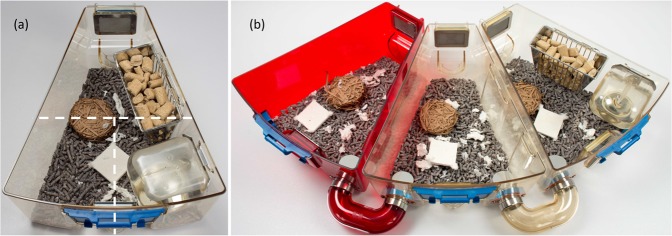Figure 1.
The standard and the complex housing systems. (a) Each standard cage was provided with food, water and two types of nesting material. The three locations used to score activities were: front-right (near the water bottle and part of the feeder); front-left (the most open space in the cage); and back (semi-open space behind and under part of the feeder at the back of the cage). (b) The complex system consisted of three cages connected by external tunnels. In each triad, one cage was red polycarbonate and placed on one end. Food and water were only available in one of the amber cages, and the position of this food and water cage was alternated between the end and the middle position every two weeks. Two types of nesting material were provided in each cage of the triad. The three locations used to score activities were: red cage; neutral cage; and food and water cage. The photographs were taken by Dr. Bev Chua, Staff Veterinarian and Communications Director at Animal Care Systems. Note: The bedding in the photographs is different from that used in this study (pictured here, Estes’ Cell Sorb Plus). The correct bedding can be seen in Supplementary Information.

